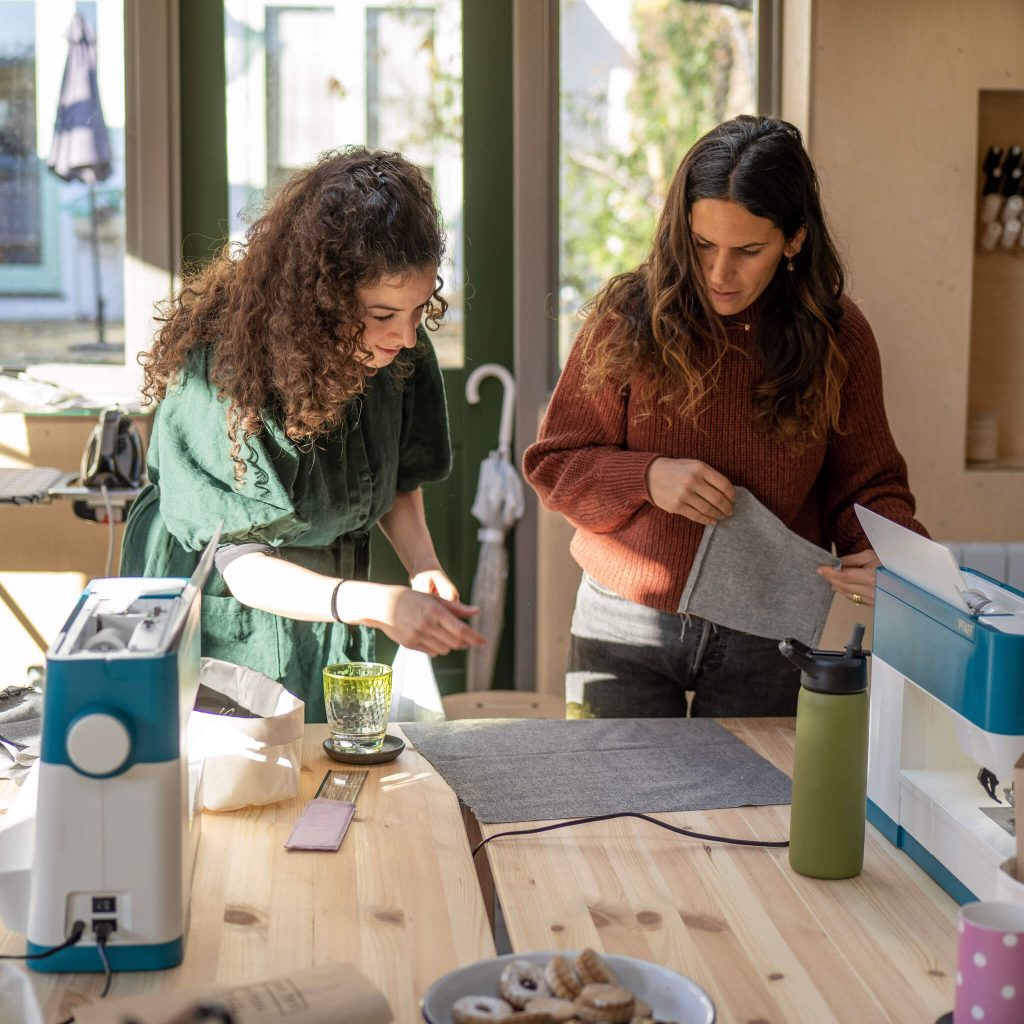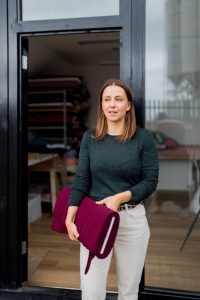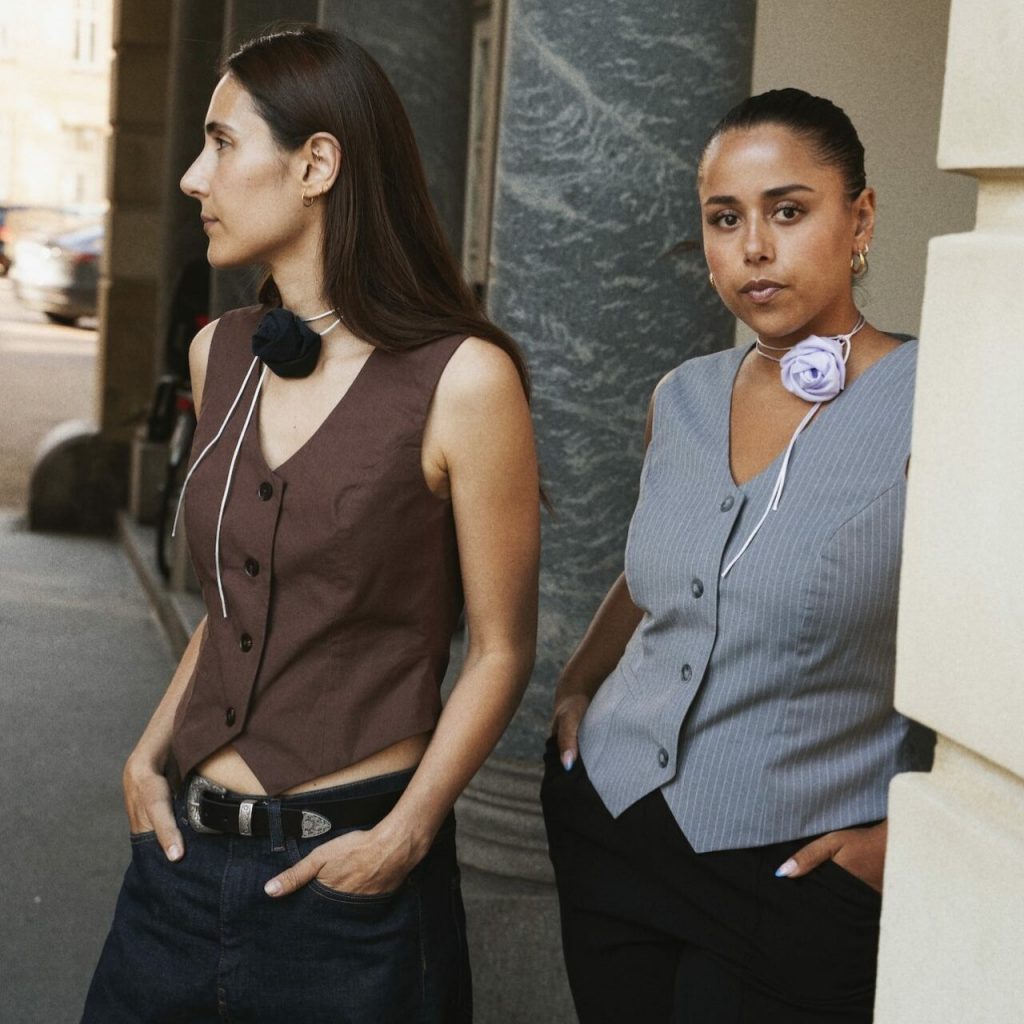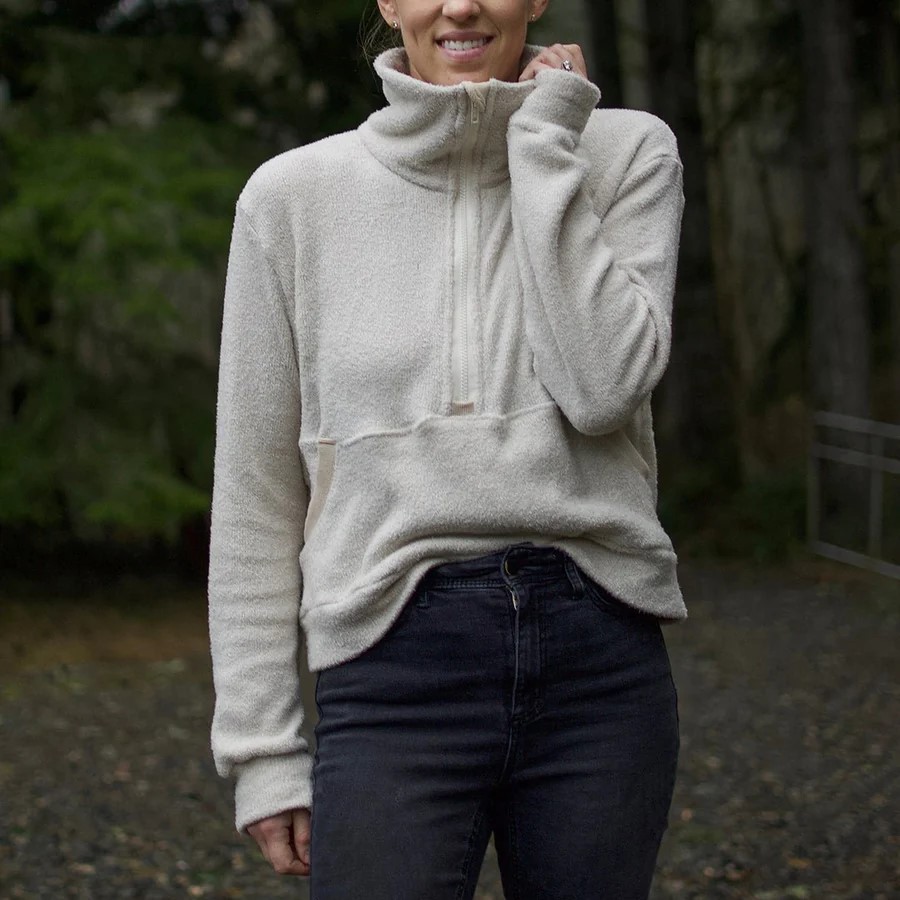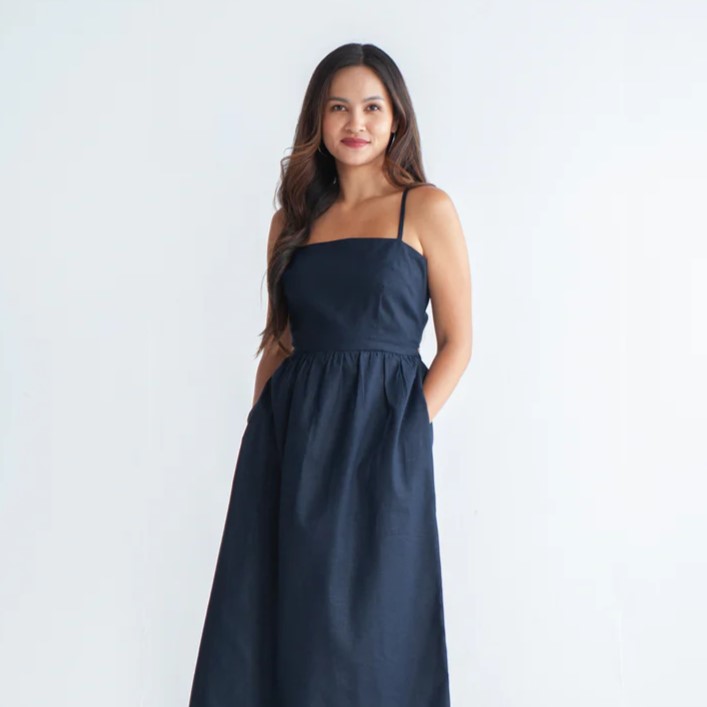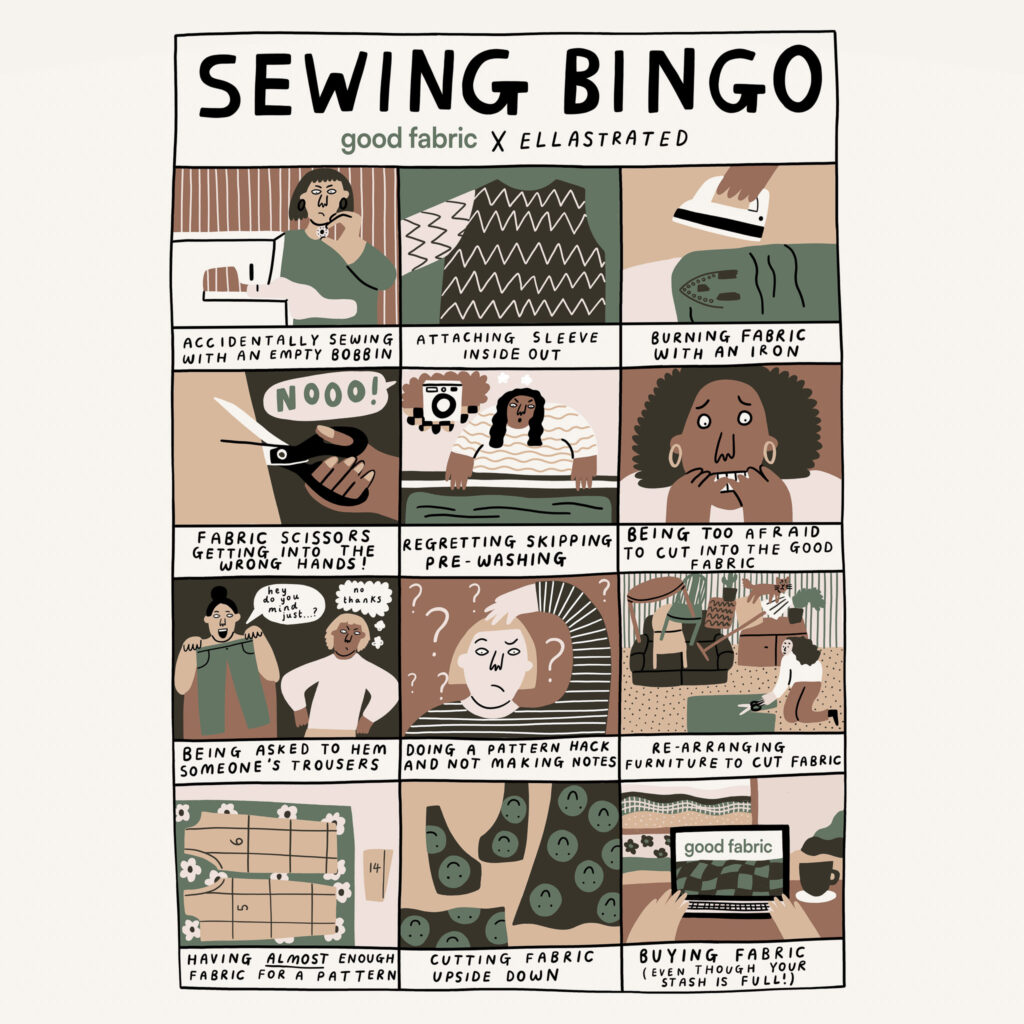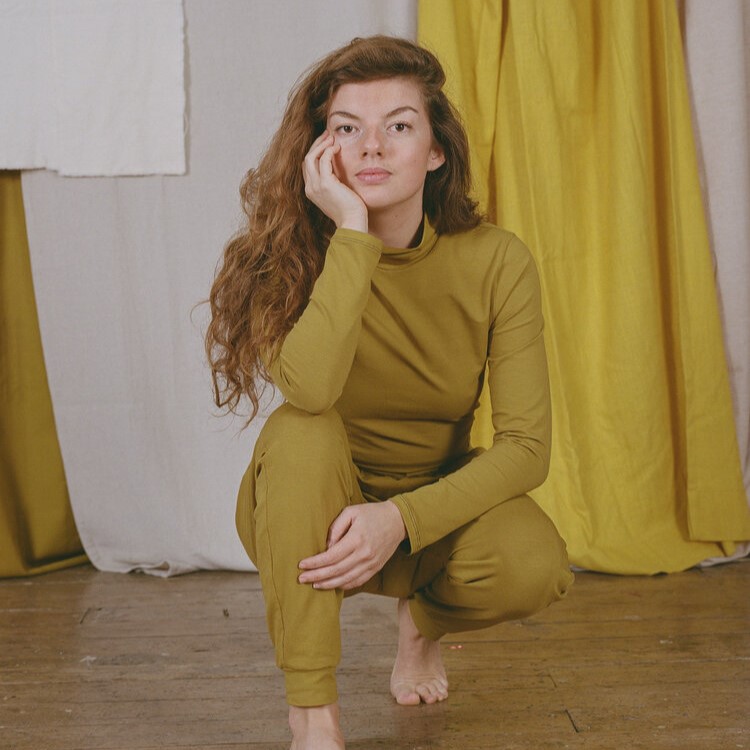Recently, we had the pleasure of speaking with Charlotte, founder of the fantastic The Garden Sewing School. A mum, entrepreneur, and fellow sewing enthusiast, Charlotte was ready to spill the beans on what it’s like to start a business in the modern arts industry.

The Garden School offers amazing sewing classes in London, inspiring a new community of creatives to pick up a needle and thread and get sewing! From learning how to draft patterns to fitting tailored suits, she shares her knowledge of sewing to fill others with the confidence they need to start their own craft-fuelled haberdashery journeys. In this digital age, sewing is an art that needs more people like Charlotte to champion it.
In our chat, we spoke about everything from blending being a mum and an entrepreneur to how to be more sustainable when choosing fabrics, and even got a peek inside Charlotte’s fabric stash! Check out the full interview below.
–
Before opening The Garden Sewing school, I heard that you worked in education, teaching Arts & Textiles in a secondary school. So, what prompted the pivot in your career to move away from teaching and start your own business?
Firstly, my sewing obsession had grown to a point where it started to eclipse work and all my other hobbies, so it felt like a natural pathway to try and make it part of my career. I would spend a lot of my day at work dreaming of new garments and getting excited to run home to my sewing machine!
Secondly, I had my son early on in 2021. I was fully intending to return to my teaching job by the end of the year, but as that point came closer, I started to think of ways that I could blend my teaching and sewing experience while working more flexibly to spend time with my son. I had the space to do it, so the circumstances all aligned perfectly.
You mention on your website that you’re an artist. We take it that you like to experiment with your medium, so what is your favourite piece of art that you have made?
I did my BA in Fine Art Sculpture and worked a lot with textiles in my sculptural practice. Puppet making was my most beloved art form. I even took my puppet show and my cast of cloth creatures to the Edinburgh Festival in 2018! One of my favourite puppets is a naked lady who is apparently quite obscene and scary, but I think she’s beautiful. Learning how to make clothes for her was what first got me interested in pattern cutting – though I have to admit that she is still naked because I liked sewing for myself too much.
Is running a sewing school what you expected? Have there been any surprises?
Running a sewing school is a lot more sociable than I expected and I’ve been so pleasantly surprised by how needed it feels. I wasn’t sure I would get more than a handful of clients in the first year, but there is a huge demand for sewing classes. Because it’s a local business, I can feel the craft community growing in my area and I’m so proud to be contributing to that. Seeing students forming connections with each other brings me so much joy, too, as we all know that sewing friends are the best friends!
When you run a business by yourself, you wear many hats; digital marketer, social media manager, accountant, business developer and receptionist, and that’s all on top of actual teaching! Could you tell us about your typical day running a sewing school?
It’s a very long day, for sure! And it feels like a game of Tetris trying to fit everything in. On a typical working day, I’ll be woken up by my toddler so start by getting him ready and dropping him off at nursery. Sometimes I have a morning class, but if not, then I’ll clean up the studio space and prepare it for my evening class. I usually do an hour or two of admin – things like invoicing, working on the website, accounts and emails. I pick up my son from nursery around midday, and we have lunch together. Then when he naps, I have some time to rest as well, usually in the form of sewing for myself. The afternoon is spent with my son then I run my evening classes from 6-9 pm.
Running a small business can be very time-consuming as there’s always work that needs to be done. How do you balance running a small business and looking after your little boy?
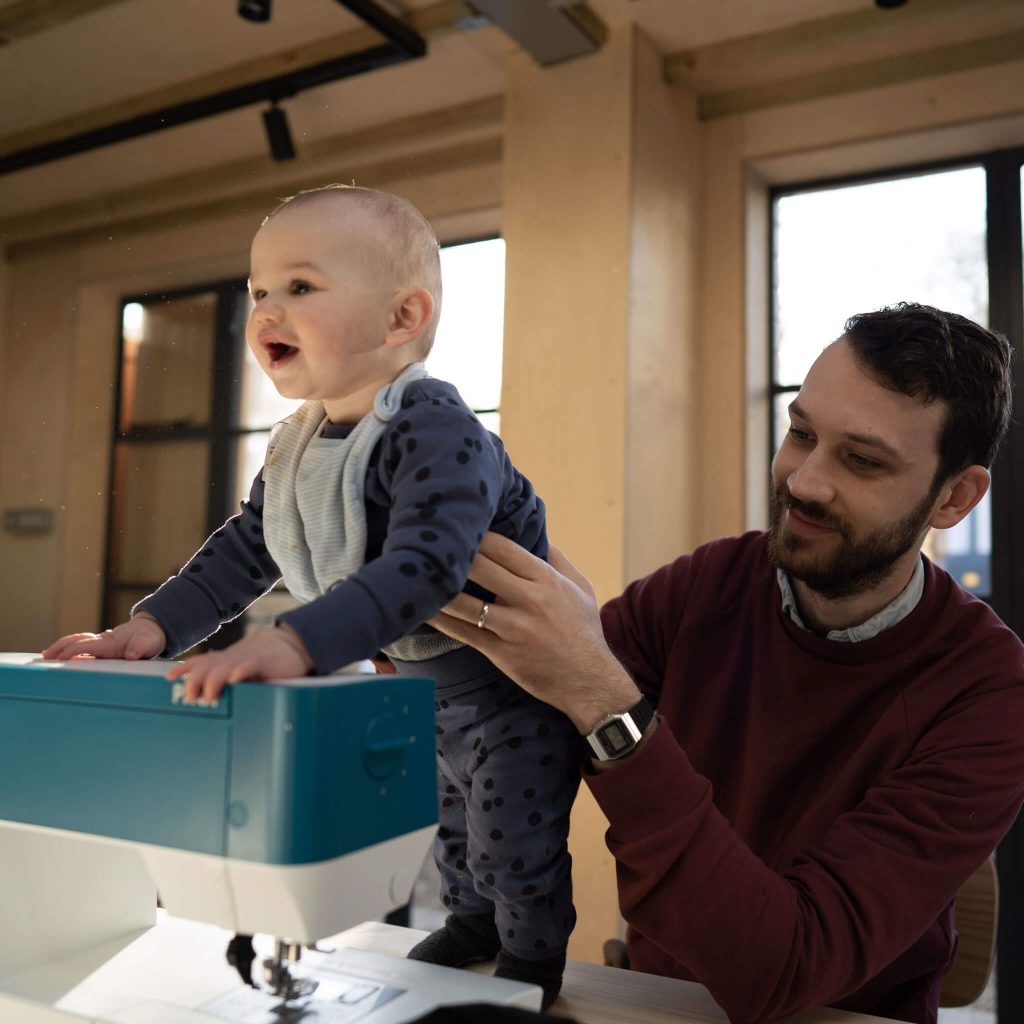
It’s the biggest challenge, and I’m sure all working parents can relate. You never feel like you’re getting balance right. My husband and I now work equal hours and share the childcare, but on totally opposite schedules, so we’ve had to sacrifice time together. But I feel extremely lucky that my setup allows me to get in most of my working hours when my son is asleep and still spend a good portion of the day with him. I’ve learned that trying to shoehorn work into my time with him doesn’t work. I’m still learning, but the aim is to be as productive as possible when I’m not with him and keep strict working hours so that it doesn’t erode my family time.
We love seeing your creations on Instagram, from quilts and bags to self-drafted dresses. What is your favourite sewing project to tackle?
My favourite sewing projects are the completely self-drafted ones. I love taking a project from drawings through several drafts to a finished product. I imposed a pattern ban on myself earlier this year, which really helped me step up my drafting skills. I recently made myself a mannequin in my measurements and started draping, which is such a revelation after years of adjusting 2D patterns!
There are so many ways to approach your next sewing project, from identifying gaps in your wardrobe and creating special occasion outfits to replicating your worn-out but oh-so-loved items. How do you decide what to sew next?
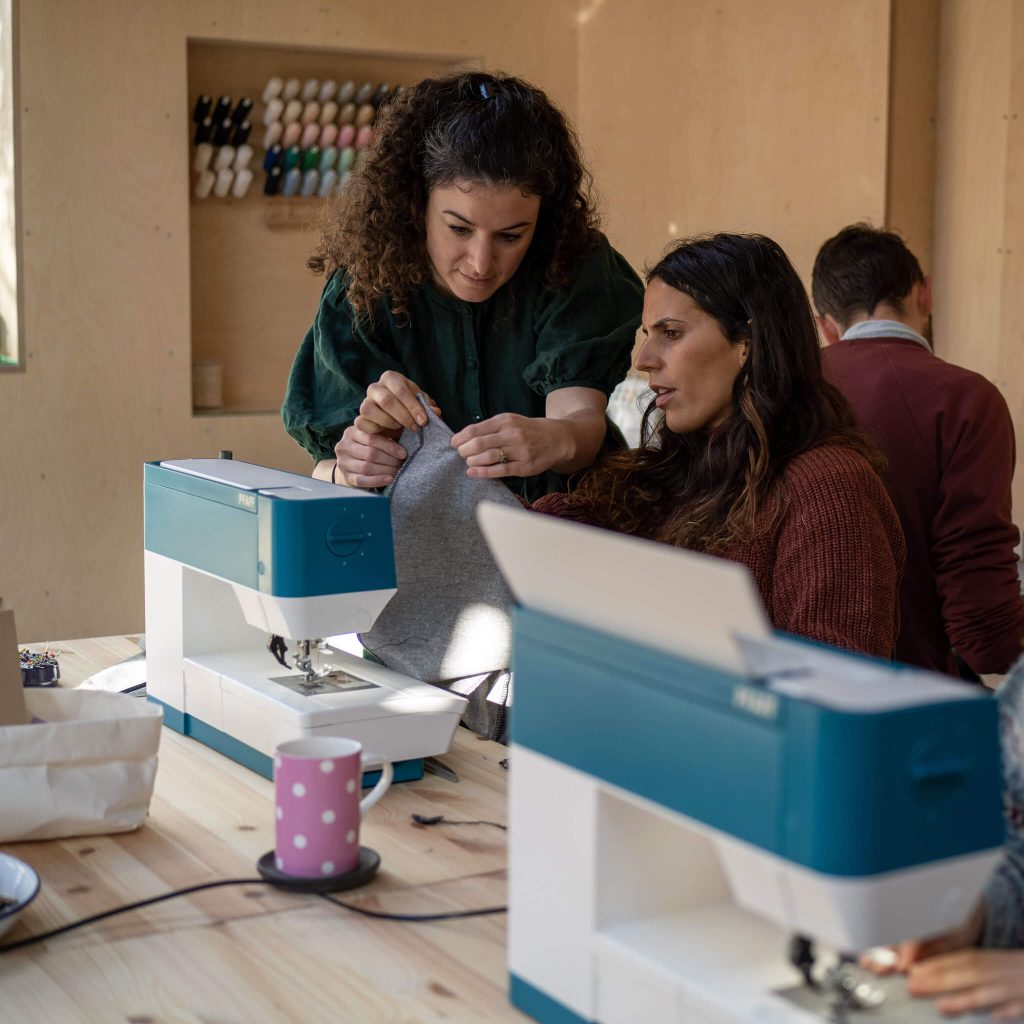
It’s so hard to decide! I used to keep a “to-sew-next” list, but I never stuck to it. I always sew whatever I’m most excited by, and that is even more complicated now because I’m constantly inspired by what my students are making and immediately want to copy them.
Sometimes, if I’m really stuck, I look at my fabric stash (which I keep on display shelves so I can see what I have at all times) and let the fabric I’m most drawn to guide me towards the next project.
Honest, truth…how big is your fabric stash?
I’m pleased to say it’s smaller than it has been in the past – I’m getting better! I’ve realised that fabric bans do not work for me, like dieting. I’m just going to want it more when I can’t have it. But I have definitely grown more discerning the longer I’ve been sewing. I only allow myself to buy fabric when I have a specific project in mind, and I’ve managed to reduce my stash significantly by giving away any unwanted items to students for their projects.
When you are new to sewing, fabric shopping can super tricky. What advice would you give your students when shopping for fabrics online?
I try and encourage students to look at all the details available and I always offer consultation before they buy. Learning names of fabrics, fabric weight, stretch percentage, fibre content etc., is essential. Where possible, we try to find images on Instagram or Pinterest of what the fabric looks like when sewn into a garment so that they can see how it drapes and what the colour looks like in different lights.
We can’t not touch on sustainability. We know that no fabric is perfect, as everything that’s produced leaves an impact on the environment and people involved in the supply chain. So when you shop for fabrics, what do you look for when it comes to sustainability?
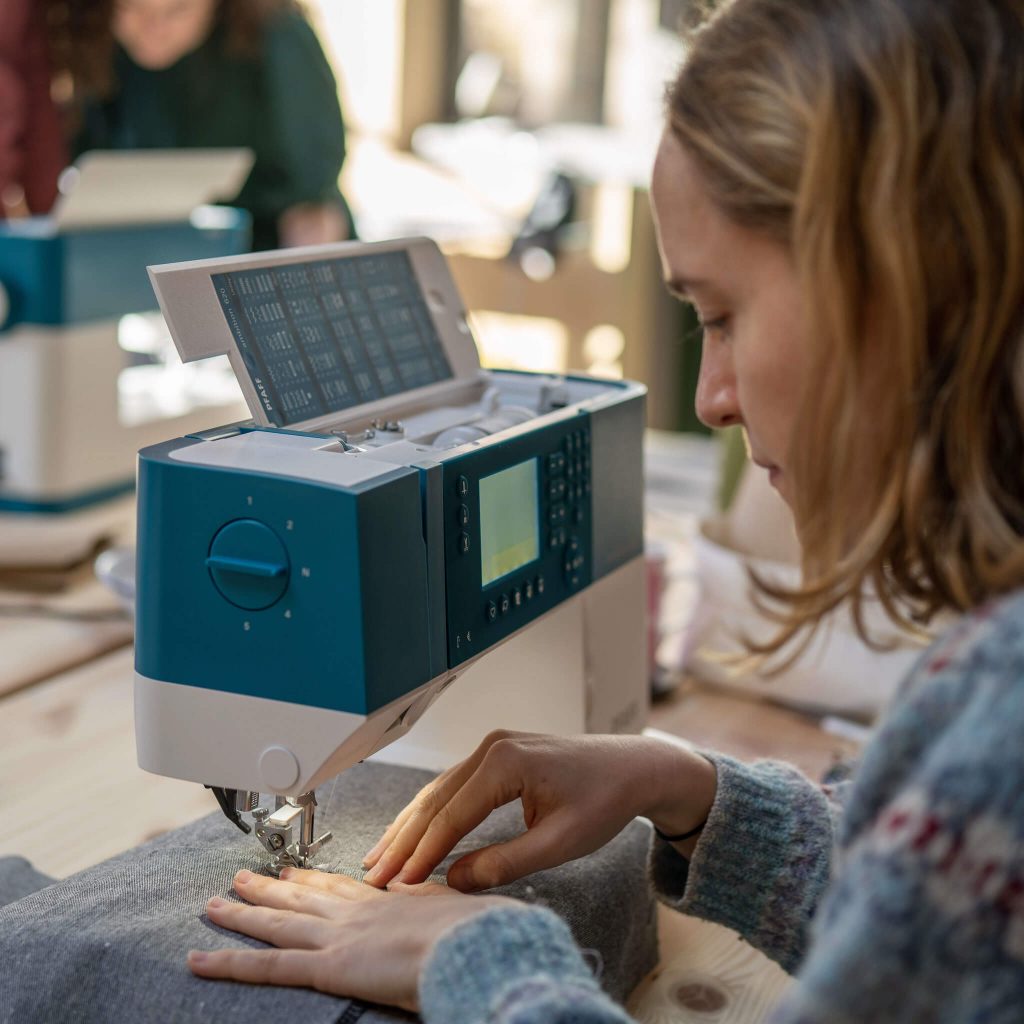
I’ve heard some good advice from a sustainability expert on a sewing podcast who said that the most impactful sustainable practice we can do is increase the lifespan of our clothing. Now, when I shop for fabric, I know I need to make things in my tried and tested colour palette with soft, comfy fibres that I’ll want to wear for as long as possible. These are pieces that I will mend and refashion for years. Sadly I can no longer justify the experimental metallic acid-green jacquard for a party dress that I’ll wear twice, no matter how much I’d love to!
Not to sound too dramatic, but as it stands in 2022, we’re facing an energy crisis, increase in inflation rates, and a very uncertain political future for the UK. We, as small business owners, need to bullet proof our businesses in order to survive and thrive. Knowing your experience, what advice would you give fellow small business owners on how to make their business more resilient?
I’ve learned this year that following my instincts or desires is not always what’s best for my business to thrive. I have to follow the numbers and look after my clients even if it’s not exactly what I had in mind for my business trajectory. I had so many ideas that I hoped would materialise, but in reality there wasn’t demand for it. I’ve had much more success by putting clients first and adapting my services based on their feedback and needs. They’re the ones keeping my business afloat, after all!
Let’s finish on a high. We want to know more about your future plans for The Garden Sewing school. If money was not an issue and failure not an option, what are your dreams for your business?
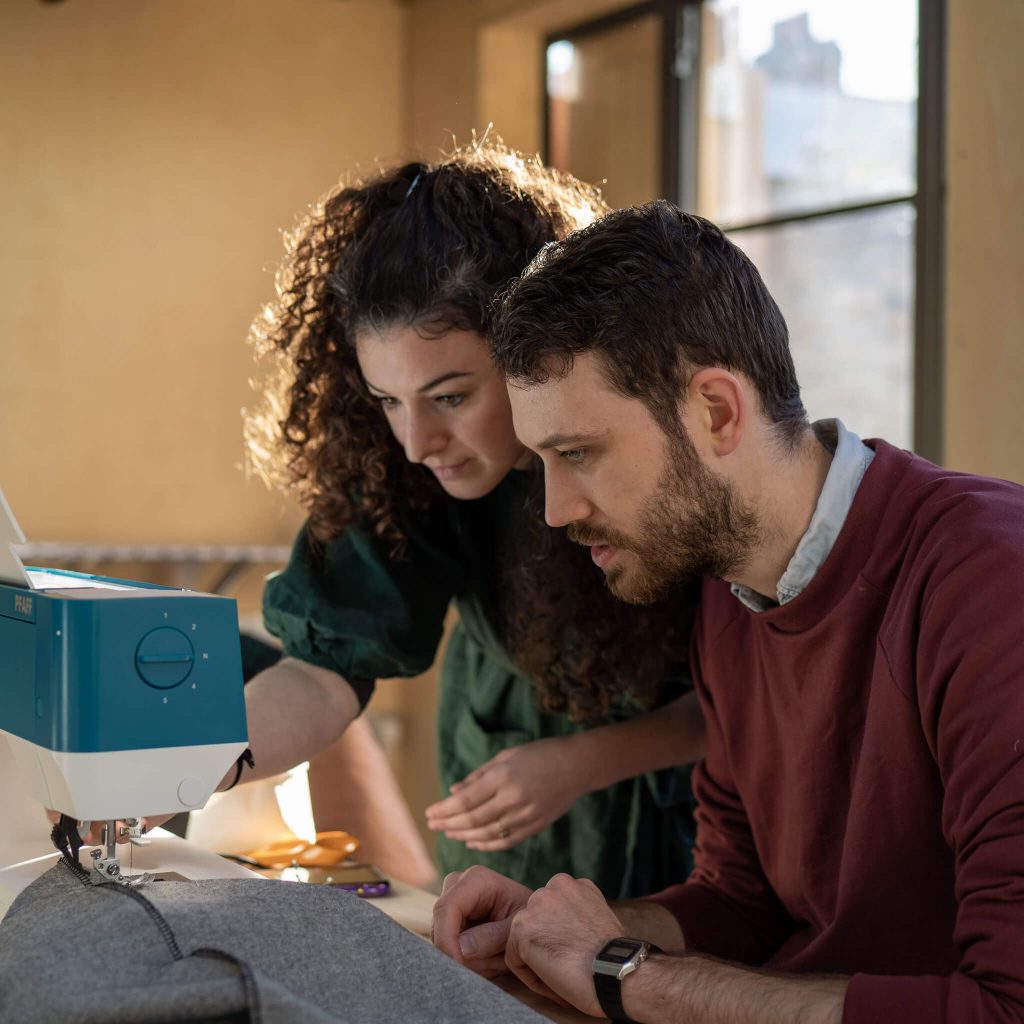
I would love to work with some more sewing teachers and one day have a Garden Sewing School team. I hope it’s not just me alone forever! I also love the idea of being able to provide work opportunities for new mums who would like to work unconventional hours so they can still spend time with their little ones. The next big dream alongside my sewing school would be to make some of my designs and drafts into PDF sewing patterns. I just need a few more hours in the day!
–
That’s a wrap, folks! We’d like to give a big thank you to Charlotte for chatting with us, and if you’re interested in joining her fantastic sewing classes in London, be sure to check out more on The Garden Sewing School website. She has classes available for beginner, intermediate, and advanced sewists and will cater her lessons depending on your needs. There are also private lessons available if you’d prefer to learn on your own and take advantage of a super useful one-to-one session!
If you do book a lesson with Charlotte, be sure to stock up on plenty of sustainable fabrics from Good Fabric to bring your patterns to life. From organic cotton to sustainably sourced wool, we have everything you need to pursue your sewing passion.
If you’re a fan of bitesize sewing help and alllll the sustainable fabric inspiration, make sure to follow @good_fabric_store too!
